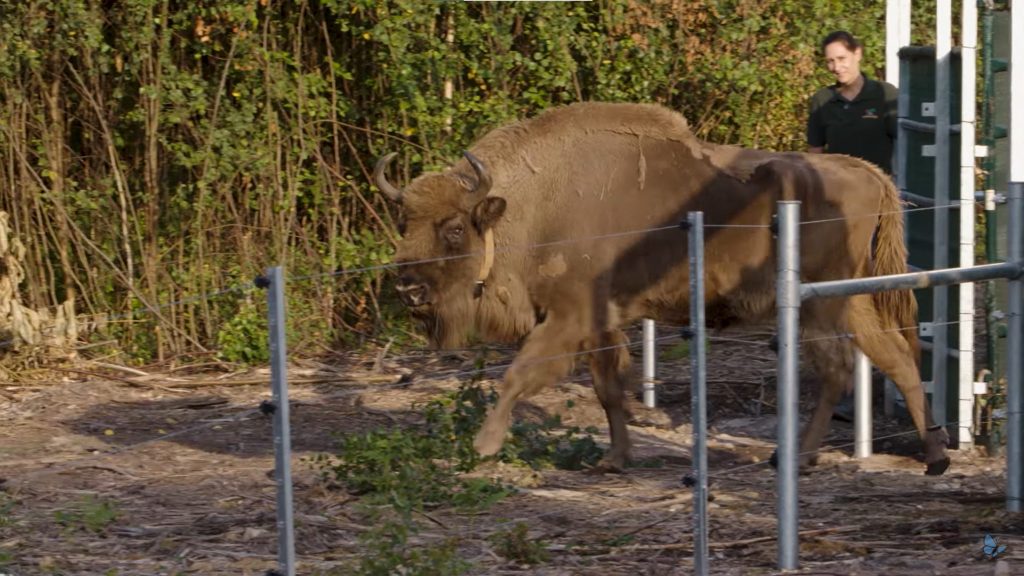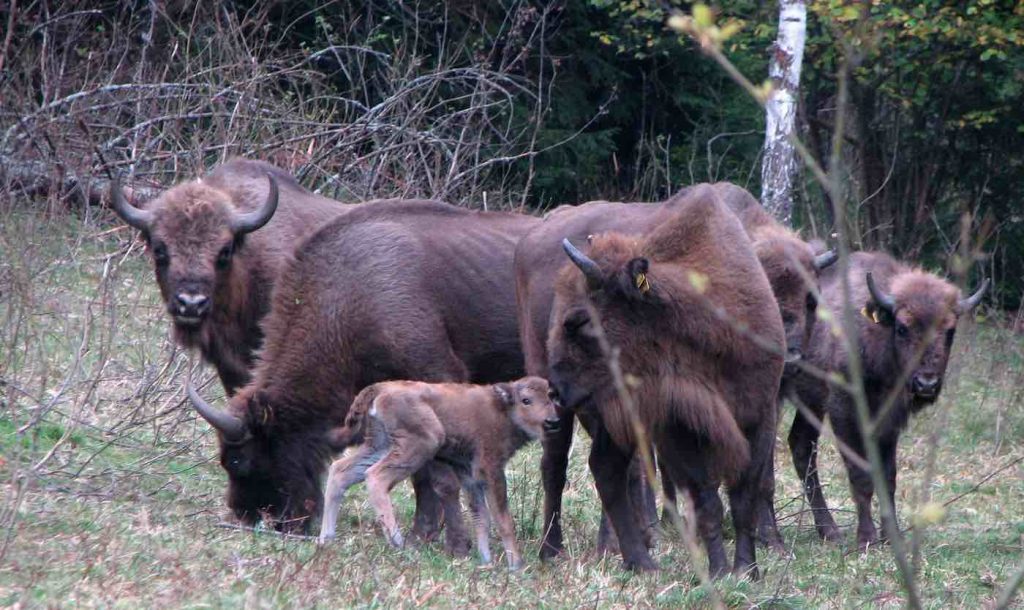
Wild European bison have been released in southeast England where they will roam unperturbed by humans on Great Britain for the first time in 6,000 years.
It’s the culmination of several years of planning by the Kent Wildlife Trust, which want to unleash the bison’s powers of creation and destruction upon a non-native woodland in order to create a more British landscape in the long run.
The target is West Blean Woods, as part of a project GNN reported on in 2020 called “Wilder Blean.” There stands a commercial forest of non-native conifer trees. The bison love gnawing on bark, which will act as a food source while they inevitably kill a fair amount of these invasive trees.
These deaths, combined with the trampling of their hoofs, and their habit of rolling around taking dust baths, will open up space in the canopy and the understory to allow light and native plants to take hold.
“The restoration of naturally functioning ecosystems is a vital and inexpensive tool in tackling the climate crisis,” said Evan Bowen-Jones, CEO at Kent Wildlife Trust (KWT).
“We want Wilder Blean to mark the beginning of a new era for conservation in the UK. We need to revolutionize the way we restore natural landscapes, relying less on human intervention and more on natural engineers like bison, boar and beaver.”
CHECK OUT: Irish Metalhead Turns His Ancestral Estate into Model of Rewilding: It Naturally Grew Into Biodiverse Eden
Known as a keystone species, similar to krill in the ocean, tigers in India, or bees in a meadow, bison provide services that allow the ecosystems they live in to operate at a much higher capacity in terms of ecosystem activity. In conservation terms, a keystone species is one that plays a role in the preservation of other species, and the ecology as a whole.
In an unexpected way, the attempted restoration of bison in the English ecosystem is more about halting England’s current species loss than it is about restoring some kind of Stone Age ecology to the island. Their fur makes them a kind of walking seed bank, dispersing seeds around as they change the shape of the forest through their habits.
All this provides habitat and food for insects and plants, the basis of the food web, onto which glom on birds, and larger species like deer, badgers, and fox.
“I cannot wait to see how the bison start to shape the Blean over a 5, 10, 20 year period as they settle into their new home and start throwing their weight around,” Tom Gibbs, a bison ranger at the site, told The Guardian.

A step up
Originally the plan was for the bison to come from Poland and the Netherlands, but Wilder Blean introduced a matriarch and two young females from Scotland and Ireland respectively where they lived in wildlife parks under strong human supervision.
A bull male will be brought over from Germany shortly after, and all animals will be collared with GPS tracking devices to monitor their preferred areas, which plants they feed upon, and more.
The total extent of the project at the moment is 200 hectares, or 440 acres, 110 acres of which will be available at the start after the bull arrives.
RELATED: Conservation Success for European Bison is ‘Living Proof’ That Ambitious Biodiversity Targets Work
The bison will soon be joined by other grazing animals, including Exmoor ponies, iron age pigs and longhorn cattle, whose ancestors, the auroch, would have roamed Great Britain around 3,000 BCE.
These herbivores natural behaviors complement the bison in managing the landscape.
The Brits will undoubtedly be hoping a more natural woodland, replacing the large blocks of conifers, will sequester more carbon and water, and help to keep the landscape and the climate that little bit cooler as they swelter under the current heatwave.
WATCH the matriarch claim her new surroundings…
SHARE This Milestone In Rewilding With Your Friends…
Credit: Source link



